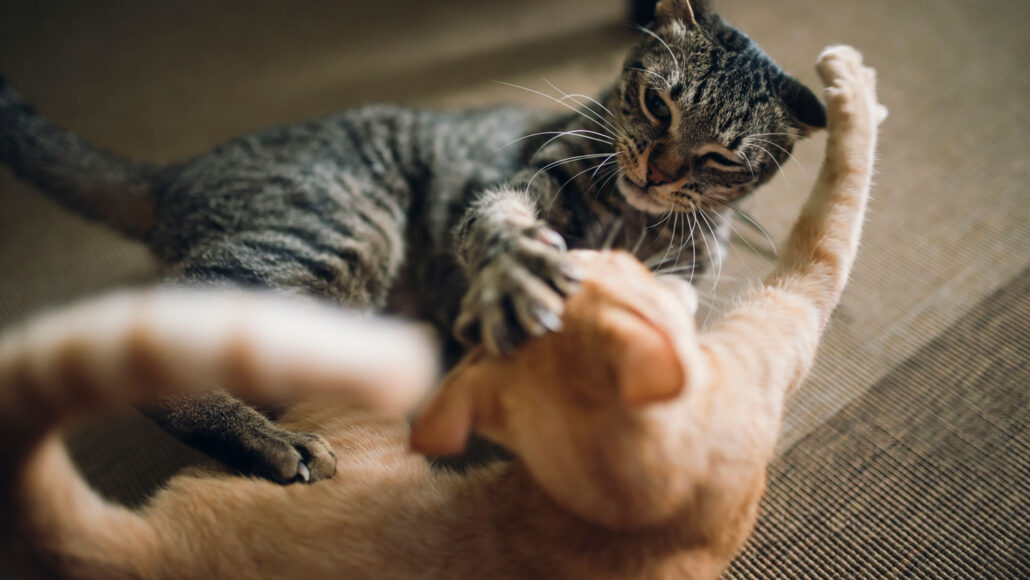How to tell if cats are having fun — or if fur is flying
Specific behaviors in cats could signal if they are friends or frenemies

This pounce could be a power move. Or it could be a request for more play. Researchers studied cat behavior to help owners understand whether their pets are friends or foes.
Westend61/Getty Images Plus
Two cats together may chase and hiss at each other. They might yowl and puff up their tails. They could pounce or even wrestle. Are the cats play-fighting — or fighting fur real? Pouncing and wrestling might be friendly play. But chasing or yowling could be tell-tail signs that the cats aren’t getting along, a new study shows. The results could help cat owners figure out if their pets are playmates, or if they stress each other out.
Cat owners often ask if their felines are playing or fighting, says Mikel Delgado. She’s a cat behavior expert at Feline Minds, a consulting company in Sacramento, Calif. She was not involved in the study. “I was excited to see that researchers are taking on this topic.”
Scientists have studied cats’ social relationships — both with other cats and humans. But it can be tricky to tell whether two cats are playing or fighting, says Noema Gajdoš-Kmecová. She’s a veterinarian who studies cat behavior at the University of Veterinary Medicine and Pharmacy in Košice, Slovakia.
Sometimes cat owners miss the signs of a tense relationship, she says. Humans might think their pets are just playing when in fact they don’t get along at all. Living with another cat they don’t like can make some animals ill and stressed, Gajdoš-Kmecová explains. Other times, owners rehome their cats. They assumed their pets were fighting — when their cats were really friends.
Gajdoš-Kmecová and her colleagues watched about 100 cat videos. Each video had a different pair of cats interacting. After viewing around one-third of the videos, Gajdoš-Kmecová noted six main types of behaviors. These included wrestling, chasing, making noises and staying still. She then watched all of the videos. She tallied how often and how long each cat showed one of the six behaviors. Next, other members of the team watched the videos. They, too, labeled each behavior to confirm the results.

Educators and Parents, Sign Up for The Cheat Sheet
Weekly updates to help you use Science News Explores in the learning environment
Thank you for signing up!
There was a problem signing you up.
The team was able to pinpoint three types of interactions between cats: playful, aggressive and in-between. Quiet wrestling suggested playtime. Chasing and sounds like growling, hissing or yowling implied aggressive encounters.
The in-between behaviors could be a little playful and a little aggressive. They also often included one cat moving toward the other. It might pounce on or groom its fellow feline. These actions could hint that one cat wants to keep playing while the other doesn’t. The more playful cat gently nudges to see if its partner wants to continue, the authors say. Gajdoš-Kmecová and her colleagues published their findings January 26 in the journal Scientific Reports.
This work provides a good first look at how cats get along, Gajdoš-Kmecová says. But it’s just the start. In the future, she plans to study more subtle behaviors like ear twitches and tail swishes.
One bad encounter doesn’t mean the relationship is cat-astrophic, both Gajdoš-Kmecová and Delgado note. Owners should observe their cats together many times. Patterns of behavior may show if the pets get along or get into cat fights more often, Gajdoš-Kmecová says. “This is not just about one interaction.”







